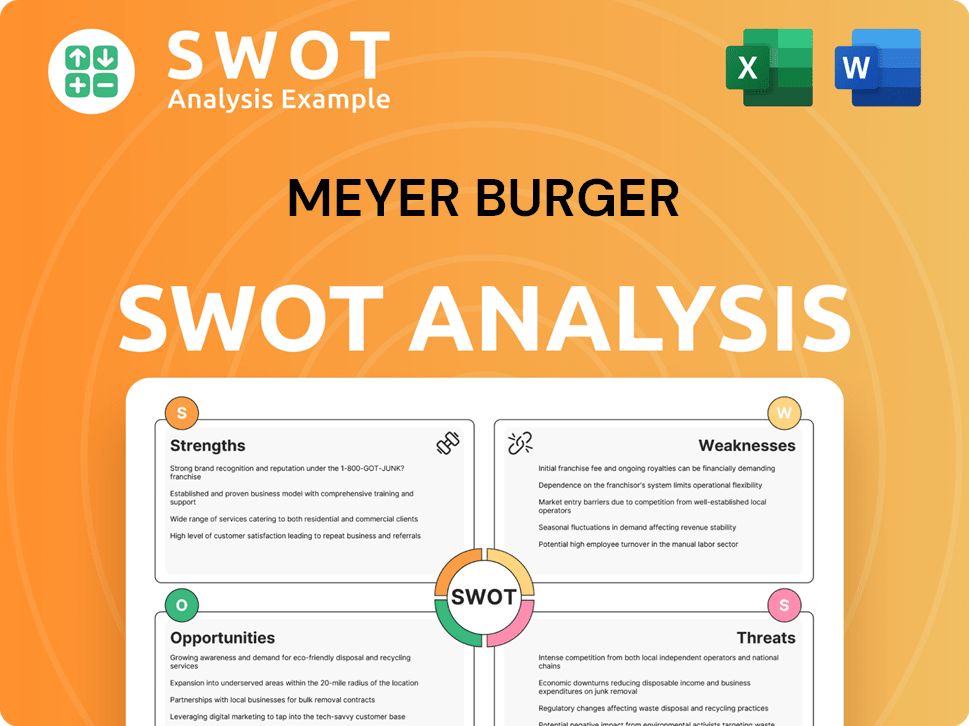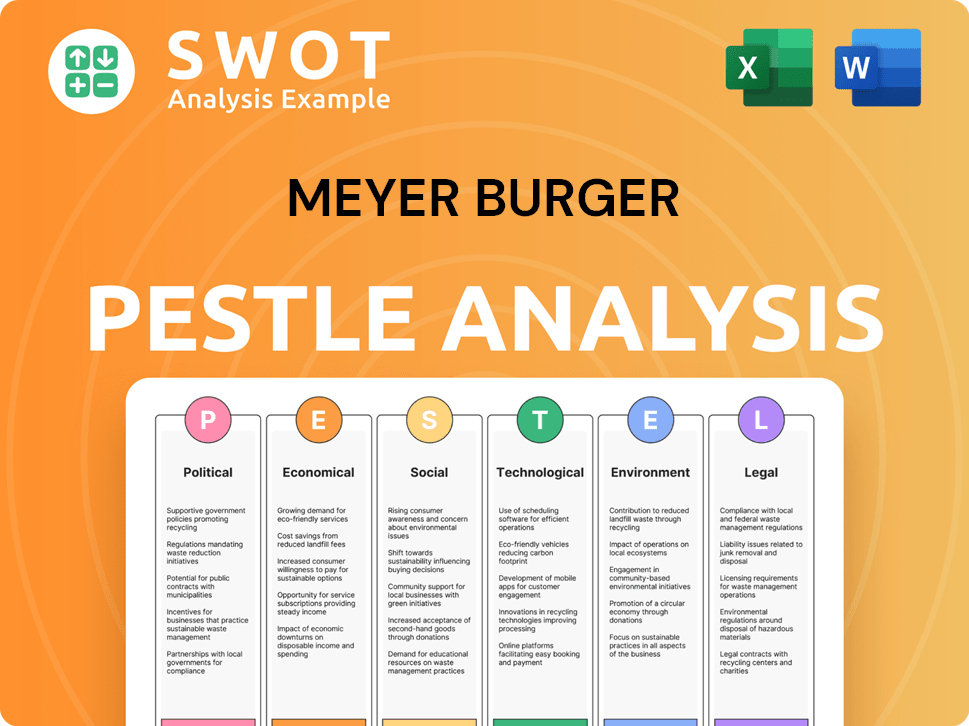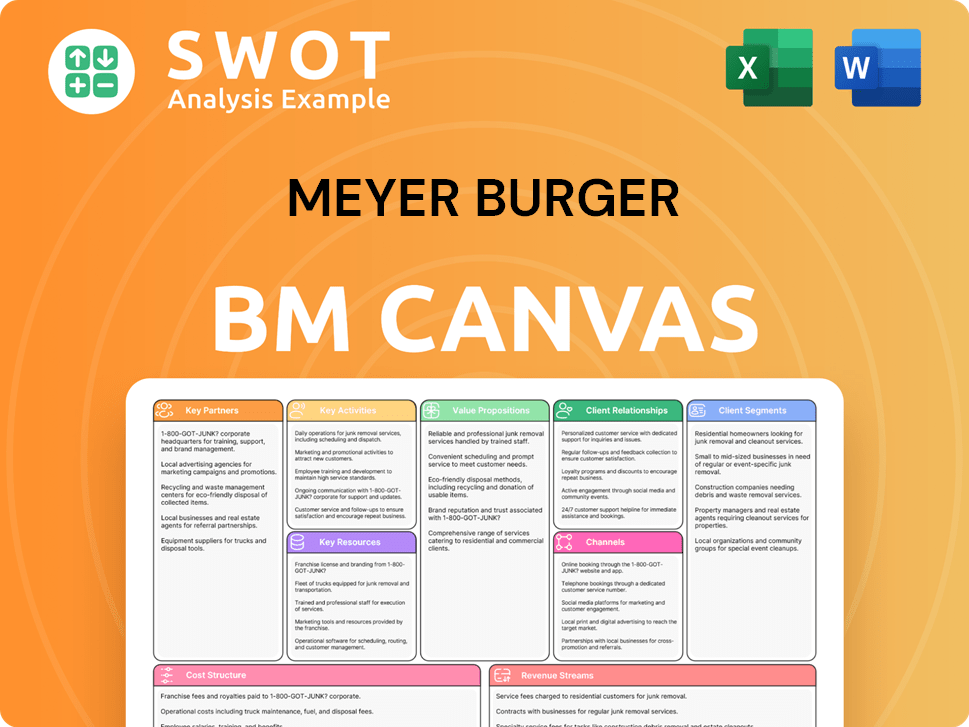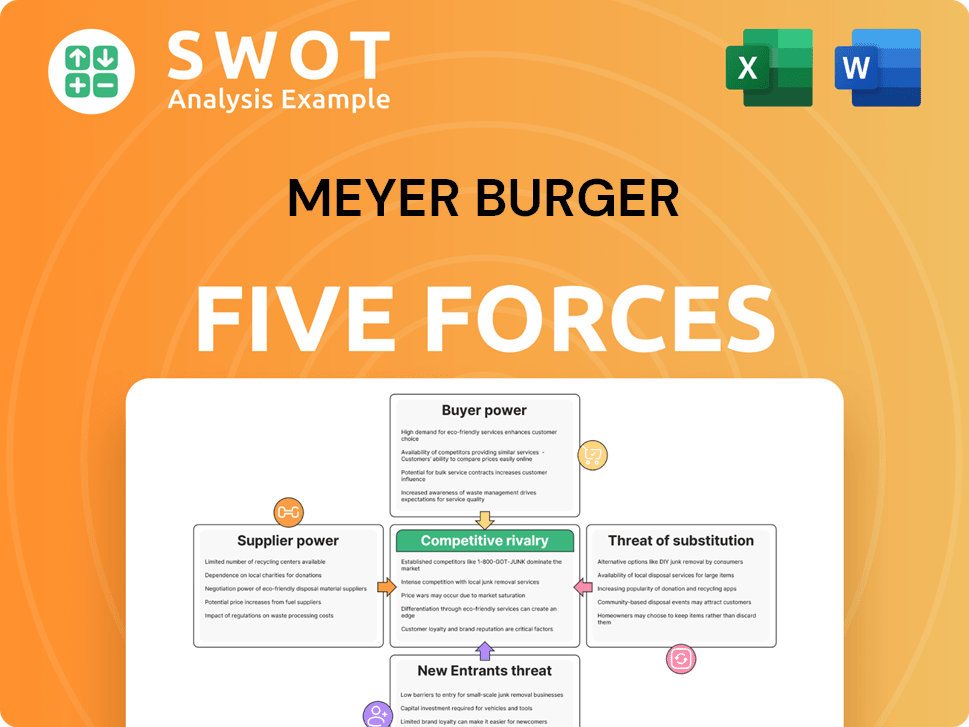Meyer Burger Bundle
How Does Meyer Burger Stack Up in the Solar Race?
The solar energy industry is booming, fueled by global sustainability goals and rapid technological innovation. Meyer Burger has strategically pivoted to become a key player, focusing on high-performance solar cells and modules. But in this dynamic environment, understanding the Meyer Burger SWOT Analysis is crucial to assess its position.

This shift places Meyer Burger squarely within the competitive landscape of the solar panel manufacturers, vying for market share in the PV module market. To truly grasp Meyer Burger's potential, we must delve into a detailed Meyer Burger market analysis, identifying its key rivals and evaluating its competitive advantages. This exploration will illuminate how Meyer Burger differentiates itself and its future outlook within the solar energy industry.
Where Does Meyer Burger’ Stand in the Current Market?
Meyer Burger is establishing a foothold in the high-performance solar market, focusing on premium solar cells and modules. The company is aiming to become a significant player in Europe, competing against dominant Asian manufacturers. Its core offerings include high-efficiency solar modules that use heterojunction (HJT) technology and SmartWire Connection Technology (SWCT). These technologies are designed to boost energy yield and increase durability.
The company's strategy involves a strong presence in Europe, with manufacturing in Germany, and expansion into the United States with a new plant in Goodyear, Arizona, which started production in Q2 2024. This move is designed to serve the growing North American solar market and take advantage of incentives like the Inflation Reduction Act. Meyer Burger targets residential, commercial, and utility-scale customers who prioritize high efficiency, reliability, and products made in Europe or the US.
Meyer Burger's module sales increased to 166 MW in the first half of 2023, up from 149 MW in the previous period. However, the company faced challenging market conditions in 2023, resulting in a significant net loss of CHF 308.8 million and a negative EBITDA of CHF 175.7 million. Despite these financial challenges, Meyer Burger's investments in advanced technology and market expansion indicate its commitment to securing a strong position in the high-efficiency segment. For more details on the company's business model, you can check out Revenue Streams & Business Model of Meyer Burger.
Meyer Burger concentrates on the high-performance segment of the solar market. This focus allows the company to differentiate itself by offering premium products. The company's target market includes residential, commercial, and utility-scale customers.
The company uses proprietary heterojunction (HJT) technology and SmartWire Connection Technology (SWCT). These technologies enhance energy yield and durability, giving Meyer Burger a competitive edge. The focus on advanced technology is a key part of its strategy.
Meyer Burger has a strong presence in Europe, with manufacturing in Germany. It is expanding into the United States with a new plant in Arizona. This expansion supports its goal to serve the North American market.
In the first half of 2023, module sales increased. However, the company faced challenges in 2023, resulting in a net loss. Despite these challenges, Meyer Burger continues to invest in technology and market expansion.
The Meyer Burger competitive landscape is influenced by the broader solar energy industry, including the PV module market. The company's ability to compete depends on several factors. These include technological innovation, manufacturing capacity, and geographic reach.
- Market Share: While specific market share figures for Meyer Burger are still emerging, the company aims to increase its presence in the high-efficiency solar module market.
- Competitive Advantages: Meyer Burger's competitive advantages include its focus on premium products, advanced technology, and strategic geographic expansion.
- Challenges: Key challenges include intense competition and price pressure, particularly from Chinese manufacturers.
- Future Outlook: Meyer Burger's future outlook involves continued investment in technology and market expansion to strengthen its position.
Meyer Burger SWOT Analysis
- Complete SWOT Breakdown
- Fully Customizable
- Editable in Excel & Word
- Professional Formatting
- Investor-Ready Format

Who Are the Main Competitors Challenging Meyer Burger?
The Meyer Burger competitive landscape is characterized by intense competition from established global players and emerging specialized firms. The solar energy industry is dynamic, with technological advancements and market shifts significantly influencing the competitive environment. Understanding Meyer Burger's position requires a detailed analysis of its direct and indirect competitors, their strategies, and the broader market dynamics.
Meyer Burger's market analysis reveals a strategic focus on high-efficiency solar modules, positioning it against competitors with similar technological capabilities. The company's success hinges on its ability to differentiate through superior product performance and strategic partnerships, while navigating the challenges posed by larger, vertically integrated rivals.
In the PV module market, Meyer Burger faces a complex competitive environment. The company must continually innovate and adapt to maintain its market position.
Direct competitors in the high-efficiency solar module market include LONGi Green Energy Technology, JinkoSolar, Trina Solar, and Canadian Solar. These companies often have significant advantages in manufacturing capacity and global distribution.
Indirect competition comes from traditional energy providers and other renewable energy technologies. Companies offering complete energy solutions also pose a competitive challenge.
Meyer Burger's strengths lie in its proprietary heterojunction (HJT) and SmartWire Connection Technology (SWCT), which offer higher efficiency. These technologies provide a competitive edge over conventional PERC technology.
Competitors are investing heavily in R&D, with some developing their own advanced cell technologies, such as TOPCon. This creates a continuous 'technology race' in the solar energy industry.
Market share shifts are influenced by manufacturing capacity, supply chain resilience, and government support. Emerging players and strategic alliances also impact the competitive dynamics.
The solar market often sees price wars, with Chinese manufacturers significantly driving down module prices. This creates a challenging environment for European producers like Meyer Burger.
Several factors influence Meyer Burger's competitive position. These include technological innovation, manufacturing capacity, and strategic partnerships. The company's ability to navigate these factors will determine its success in the solar market.
- Technological Innovation: Continuous investment in R&D to improve module efficiency and performance.
- Manufacturing Capacity: Expanding production capacity to meet market demand and achieve economies of scale.
- Supply Chain Management: Ensuring a resilient supply chain to mitigate disruptions and reduce costs.
- Strategic Partnerships: Collaborating with other companies to access new markets and technologies.
- Government Support: Leveraging government incentives and policies to support domestic production.
Meyer Burger PESTLE Analysis
- Covers All 6 PESTLE Categories
- No Research Needed – Save Hours of Work
- Built by Experts, Trusted by Consultants
- Instant Download, Ready to Use
- 100% Editable, Fully Customizable

What Gives Meyer Burger a Competitive Edge Over Its Rivals?
Understanding the Growth Strategy of Meyer Burger involves a deep dive into its competitive advantages within the solar energy industry. Meyer Burger's position in the PV module market is shaped by its technological innovations and strategic manufacturing choices. Analyzing the Meyer Burger competitive landscape reveals a company focused on differentiation through proprietary technologies and a commitment to regional production.
The company's competitive edge is rooted in its heterojunction (HJT) solar cell technology and SmartWire Connection Technology (SWCT). These advancements allow for higher energy yields and improved performance compared to conventional silicon solar cells. This focus on innovation is critical in a market where solar panel manufacturers are constantly striving for greater efficiency and cost-effectiveness. A thorough Meyer Burger market analysis must consider these technological strengths.
Meyer Burger's strategic moves, including establishing manufacturing facilities in Germany and the United States, are designed to capitalize on government incentives and meet the growing demand for domestically produced solar products. While the company is still building economies of scale compared to larger Asian rivals, it aims to achieve cost competitiveness through highly automated production processes. The company's deep expertise in solar manufacturing equipment also provides an inherent understanding of production efficiencies and quality control, which is a key factor in the Meyer Burger competitive landscape.
Meyer Burger's HJT solar cells boast efficiencies exceeding 24%, translating to more power output per square meter. The SWCT further enhances module durability and performance by using thin wires to connect cells, reducing shading and improving current collection. These technologies are protected by a robust patent portfolio, providing intellectual property protection against imitation. This is a key aspect of how Meyer Burger differentiates itself.
Meyer Burger leverages its regional branding, appealing to customers who prioritize regional sourcing and higher quality standards. The company's manufacturing facilities in Germany and the United States allow it to tap into government incentives and meet growing demand for domestically produced solar products. This strategy is particularly relevant in the current PV module market.
Meyer Burger aims to achieve cost competitiveness through highly automated production processes and ongoing optimization of its manufacturing lines. The company's expertise in solar manufacturing equipment gives it an edge in production efficiencies and quality control. This focus is crucial for competing with aggressive pricing strategies of larger players in the solar energy industry.
From being a pure equipment supplier, Meyer Burger has evolved into a vertically integrated manufacturer, allowing it to directly control the quality and performance of its end products. This control is a significant advantage in ensuring consistent product quality and performance. This is a key aspect of Meyer Burger's competitive strategy.
Meyer Burger's core advantages include its proprietary HJT and SWCT technologies, which offer superior efficiency and performance. The company's 'Made in Europe' and 'Made in USA' branding appeals to customers prioritizing regional sourcing and quality. The company's strategic focus on manufacturing efficiency and vertical integration further strengthens its position in the solar energy industry.
- Technological Innovation: HJT and SWCT for higher efficiency.
- Regional Branding: 'Made in Europe' and 'Made in USA' for quality and local sourcing.
- Manufacturing Efficiency: Automated processes for cost competitiveness.
- Vertical Integration: Direct control over product quality and performance.
Meyer Burger Business Model Canvas
- Complete 9-Block Business Model Canvas
- Effortlessly Communicate Your Business Strategy
- Investor-Ready BMC Format
- 100% Editable and Customizable
- Clear and Structured Layout

What Industry Trends Are Reshaping Meyer Burger’s Competitive Landscape?
The solar industry is experiencing rapid technological advancements, evolving regulatory frameworks, and increasing consumer demand for sustainable energy. This dynamic environment presents both opportunities and challenges for companies like Meyer Burger. Understanding the Meyer Burger competitive landscape requires a close look at industry trends, potential future obstacles, and areas for growth.
The company's position is influenced by its technological innovations, manufacturing capabilities, and market strategies. A key aspect is the competitive pressure from other solar panel manufacturers. The company's ability to adapt to changing market conditions and maintain a technological edge will be critical for its long-term success in the PV module market.
The solar energy industry is driven by continuous technological improvements, such as higher solar cell efficiency and the development of integrated energy solutions. There's a growing emphasis on supply chain resilience and localized manufacturing. The emergence of technologies like TOPCon and perovskites poses a challenge to Meyer Burger's technological lead.
Intense price competition from Asian manufacturers, particularly from China, is a significant challenge. The company needs to rapidly scale up its production capacity to achieve economies of scale. Geopolitical tensions and trade policies could disrupt global supply chains and increase raw material costs.
Growing global demand for renewable energy provides a robust market for solar products. Meyer Burger's focus on high-efficiency, premium modules positions it well for segments demanding superior performance. Expansion into the US market offers strategic advantages due to government support and growing demand.
Continued investment in R&D to enhance HJT technology and explore next-generation solar technologies is crucial. Strategic partnerships and collaborations can help expand market reach and mitigate supply chain risks. The company's success hinges on innovation, efficient production scaling, and leveraging technological advantages.
The company's competitive strategy is influenced by several factors, including its technological edge, manufacturing capacity, and market presence. The company's financial performance in 2023 showed a substantial net loss, highlighting the impact of price pressures. To understand the intricacies of their market approach, consider the Growth Strategy of Meyer Burger.
- Innovation: Continuous investment in research and development to improve solar cell efficiency and explore new technologies.
- Manufacturing Capacity: The ability to scale production efficiently to meet growing demand and achieve economies of scale.
- Market Focus: Targeting specific market segments, such as rooftop solar and specialized applications, where premium performance is valued.
- Strategic Partnerships: Collaborating with other companies to expand market reach and mitigate supply chain risks.
Meyer Burger Porter's Five Forces Analysis
- Covers All 5 Competitive Forces in Detail
- Structured for Consultants, Students, and Founders
- 100% Editable in Microsoft Word & Excel
- Instant Digital Download – Use Immediately
- Compatible with Mac & PC – Fully Unlocked

Related Blogs
- What are Mission Vision & Core Values of Meyer Burger Company?
- What is Growth Strategy and Future Prospects of Meyer Burger Company?
- How Does Meyer Burger Company Work?
- What is Sales and Marketing Strategy of Meyer Burger Company?
- What is Brief History of Meyer Burger Company?
- Who Owns Meyer Burger Company?
- What is Customer Demographics and Target Market of Meyer Burger Company?
Disclaimer
All information, articles, and product details provided on this website are for general informational and educational purposes only. We do not claim any ownership over, nor do we intend to infringe upon, any trademarks, copyrights, logos, brand names, or other intellectual property mentioned or depicted on this site. Such intellectual property remains the property of its respective owners, and any references here are made solely for identification or informational purposes, without implying any affiliation, endorsement, or partnership.
We make no representations or warranties, express or implied, regarding the accuracy, completeness, or suitability of any content or products presented. Nothing on this website should be construed as legal, tax, investment, financial, medical, or other professional advice. In addition, no part of this site—including articles or product references—constitutes a solicitation, recommendation, endorsement, advertisement, or offer to buy or sell any securities, franchises, or other financial instruments, particularly in jurisdictions where such activity would be unlawful.
All content is of a general nature and may not address the specific circumstances of any individual or entity. It is not a substitute for professional advice or services. Any actions you take based on the information provided here are strictly at your own risk. You accept full responsibility for any decisions or outcomes arising from your use of this website and agree to release us from any liability in connection with your use of, or reliance upon, the content or products found herein.